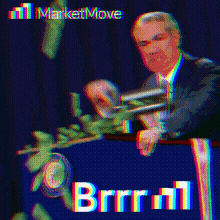MalO
Elite
- Joined
- Nov 15, 2022
- Messages
- 775
Was having a discussion today online on "where does all the money come from?" because we should be in a full-blown depression right now but it seems like people still own homes, still own SUV's and pickup trucks, and are still spending.
Tell me if this sounds familiar.
https://www.investopedia.com/terms/c/crackup-boom.asp
I think we are witnessing this right now. People are still spending but they are all in debt or on public assistance. The prices of everything have already outstripped the affordability of low-income workers, and as the crack-up boom continues even higher paid workers will no longer be able to afford things. At some point it all breaks apart.
Inject more money, don't inject more money. It's a meaningless decision. This economy is brain dead. The fed is just using machines to keep the heart pumping. At some point the coroner is going to write down what none of us want to hear on paper, and then it will be "official".
Tell me if this sounds familiar.
https://www.investopedia.com/terms/c/crackup-boom.asp
Understanding a Crack-Up Boom
The crack-up boom develops out the same process of credit expansion and the resulting distortion of the economy that occurs during the normal boom phase of Austrian business cycle theory. In the crack-up boom, the central bank attempts to sustain the boom indefinitely without regard to consequences, such as inflation and asset price bubbles. The problem comes when the government continuously pours more and more money, injecting it into the economy to give it a short-term boost, which eventually triggers a fundamental breakdown in the economy. In their efforts to prevent any downturn in the economy, monetary authorities continue to expand the supply of money and credit at an accelerating pace and avoid turning off the taps of money supply until it is too late.
In Austrian business cycle theory, in the normal course of an economic boom driven by the expansion of money and credit the structure of the economy becomes distorted in ways that eventually result in shortages of various commodities and types of labor, which then lead to increasing consumer price inflation. The rising prices and limited availability of necessary inputs and labor put pressure on businesses and causes a rash of failures of various investment projects and business bankruptcies. In ABCT this is known as the real resource crunch, which triggers the turning point in the economy from boom to bust.
As this crisis point approaches, the central bank has a choice: either to accelerate the expansion of the money supply in order to try to help businesses pay for the increasing prices and wages they are faced with and delay the recession, or to refrain from doing so at the risk of allowing some businesses to fail, asset prices to fall, and disinflation (and possibly a recession or depression) to occur. The crack-up boom occurs when the central bank chooses and sticks with the first option.
Economist Friedrich Hayek famously described this situation as like grabbing a "tiger by the tail."3 Once the central bank decides to accelerate the process of credit expansion and inflation in order to head off any recession risk, then it continually faces the same choice of either accelerating the process further or facing an even greater risk of recession as distortions build in the real economy.
As part of this process, consumer prices rise at an accelerating rate. Based on current price increases and market participants' understanding of central bank policy, consumer expectations of future inflation also rise. These create positive feedback that leads to accelerating price inflation that can far outstrip the rate of central bank money expansion and become what is then known as hyperinflation.
With each subsequent round of credit expansion and price increases, people can no longer afford the high prices, so the central bank must expand even more to accommodate these prices, which pushes the prices even higher. Instead of rising a few percent every year, consumer prices can rise by 10%, 50%, 100%, or more in a matter of weeks or days. The value of the currency depreciates drastically, and the financial system faces extreme stress.
The "crack-up" part of the crack-up boom occurs as money in the economy begins to lose its economic function as money. Price inflation accelerates to the point that money fails to fulfill its economic function and people abandon it in favor of barter or other forms of money. Under normal circumstances, money functions as a generally accepted medium of exchange, a unit of account, a store of value, and a standard of deferred payment. Hyperinflation undermines all of these functions, and as market participants stop using and accepting the money, the system of indirect exchange based on the use of money that makes up a modern economy "cracks-up."
I think we are witnessing this right now. People are still spending but they are all in debt or on public assistance. The prices of everything have already outstripped the affordability of low-income workers, and as the crack-up boom continues even higher paid workers will no longer be able to afford things. At some point it all breaks apart.
Inject more money, don't inject more money. It's a meaningless decision. This economy is brain dead. The fed is just using machines to keep the heart pumping. At some point the coroner is going to write down what none of us want to hear on paper, and then it will be "official".






